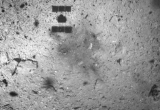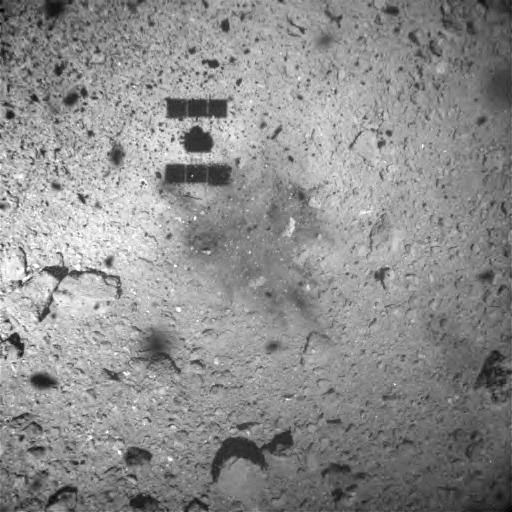Hayabusa 2 successfully performed the first in situ collection of samples from a Carbon-rich asteroid
This critical operation, performed on February 22, 2019, constituted the most complex and risky part of the ISAS/JAXA Japanese mission: it required to bring the entire spacecraft in contact with the surface of Ryugu, entirely covered with boulders of all sizes. Its success demonstrates and translates an extraordinary and unique control of space operations by ISAS/JAXA engineers. A second sample collection could be performed in a few months, prior to the return to Earth: Hayabusa2 should leave Ryugu in December 2019, to land on Earth a year later. Our laboratories should thus get in 2021 samples collected at the very surface of one of the most ancient solar system objects, rich in particular of organics which might have played a major role in the evolution towards life on Earth.
When back within the ISAS curation facility, in Sagamihara/Tokyo, the samples will be characterized before being distributed to the selected scientific teams. Invited by our ISAS partners, IAS will deliver a MicrOmega instrument to enable an infrared microscopic characterization of these returned samples, fully nondestructive, grain per grain, both of their mineralogical, hydrated and carbon-rich content.
Hayabusa2 initiates brilliantly a new era of solar system space exploration, coupling remote sensing, in situ characterization and sample returns. Upcoming missions will soon follow: Osiris-Rex (NASA), to collect samples from Bennu, another C-rich asteroid; Cheng’e 5 and 6, from China, with lunar sample returns; MMX (Mars Moon eXplorer, launch in 2024), from JAXA, to which CNES and IAS cooperate; MSR (Mars Sample Return), for the end of the decade. IAS, thanks to its expertise both in developing highly performing space instruments and in analyzing extraterrestrial samples, is a potential partner of all of them.
Contact at IAS : Jean-Pierre Bibring
Credits: JAXA, University of Tokyo, Kochi University, Rikkyo University, Nagoya University, Chiba Institute of Technology, Meiji University, University of Aizu, AIST.





